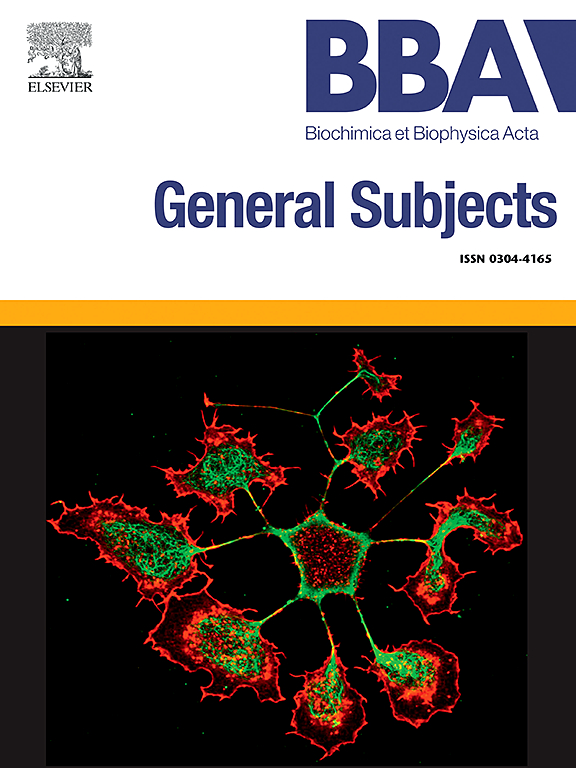Change in selectivity of estrogen receptor alpha ligand-binding domain by mutations at residues H524/L525
IF 2.2
3区 生物学
Q3 BIOCHEMISTRY & MOLECULAR BIOLOGY
Biochimica et biophysica acta. General subjects
Pub Date : 2025-02-14
DOI:10.1016/j.bbagen.2025.130775
引用次数: 0
Abstract
The estrogen receptor alpha (ERα) features a large ligand-binding pocket capable of accommodating a variety of conformationally diverse molecules, each eliciting unique cellular responses. This structural plasticity facilitates various conformational changes, exposing different interaction surfaces for cellular proteins, triggering a myriad of biological outcomes. Alterations in the ligand-binding domain, particularly through amino acid substitutions, can modify the recognition and selectivity of ERα for agonists versus antagonists. In our study, we engineered a small library of ERα variants by modifying residues 524 and 525. These modifications resulted in variants with up to seventy-fold increased selectivity for the antagonist endoxifen and up to fifty-fold increased selectivity for the antagonist 4-hydroxytamoxifen (4-OHT) over the natural ligand estradiol. Analyzing these variants elucidates the critical roles of residues 524 and 525 in determining agonist specificity for estradiol. This advancement holds significant potential for developing selective recognition molecules, a crucial step towards creating a biosensor for endoxifen, the active metabolite used in breast cancer treatment.

H524/L525残基突变对雌激素受体α配体结合域选择性的影响
雌激素受体α (ERα)具有一个大的配体结合袋,能够容纳各种构象不同的分子,每种分子都引起独特的细胞反应。这种结构可塑性促进了各种构象变化,为细胞蛋白质暴露了不同的相互作用表面,引发了无数的生物学结果。配体结合区域的改变,特别是通过氨基酸取代,可以改变受体α对激动剂和拮抗剂的识别和选择性。在我们的研究中,我们通过修饰残基524和525构建了一个小的ERα变异文库。这些修饰导致拮抗剂endoxifen的选择性增加了70倍,拮抗剂4-hydroxytamoxifen (4-OHT)的选择性增加了50倍,超过了天然配体雌二醇。分析这些变异阐明了残基524和525在确定雌二醇激动剂特异性中的关键作用。这一进展在开发选择性识别分子方面具有重大潜力,这是为内毒素(一种用于乳腺癌治疗的活性代谢物)制造生物传感器迈出的关键一步。
本文章由计算机程序翻译,如有差异,请以英文原文为准。
求助全文
约1分钟内获得全文
求助全文
来源期刊

Biochimica et biophysica acta. General subjects
生物-生化与分子生物学
CiteScore
6.40
自引率
0.00%
发文量
139
审稿时长
30 days
期刊介绍:
BBA General Subjects accepts for submission either original, hypothesis-driven studies or reviews covering subjects in biochemistry and biophysics that are considered to have general interest for a wide audience. Manuscripts with interdisciplinary approaches are especially encouraged.
 求助内容:
求助内容: 应助结果提醒方式:
应助结果提醒方式:


